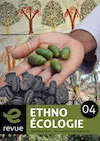All the versions of this article: [English] [français]
[Siwa #0]

- Original title:
L’agrobiodiversité du dattier (Phoenix dactylifera L.) dans l’oasis de Siwa (Égypte): entre ce qui se dit, s’écrit et s’oublie
Article published in Revue d’ethnoécologie Journal, Special Issue 4 (2013), “The Date Palm : Origin and Cultivation in the Middle East and in Egypt”, “Le Palmier dattier : Origine et culture en Égypte et au Moyen-Orient”.
Issue edited by Margareta Tengberg, Vincent Battesti, and Claire Newton.
ISSN : 2267-2419
DOI: 10.4000/ethnoecologie.1538
Online: http://ethnoecologie.revues.org/1538
PDF File: https://hal.science/hal-00707908
Research with the support of Hagop Kevorkian Center for Near Eastern Studies, NYU (New York University).

– The situation
This article is, in fact, a rather new exploration for me into popular or local intraspecific classification — that is, the classification within a taxon, and in this case, the date palm. Until now, I had presumed the situation to be simpler than it actually is: a species propagated vegetatively, yielding many varieties or, more precisely, cultivars (clones), each bearing its own name. That assumption proved premature. In the (somewhat subdued) light of this immersion into the local categorization of the date palm in Siwa — a Berber-speaking oasis in Egypt’s Libyan Desert — I had to reconsider several of my earlier assumptions, particularly regarding oasis cultivation practices I thought I knew well.
The objective of this article is to present the initial findings of ongoing research in Siwa, Egypt’s only Berber oasis, located in the Libyan Desert. The focus is especially on the agrobiodiversity of one of its cultivated plants: the date palm (Phoenix dactylifera L.).
– Abstract:
The date palm (Phoenix dactylifera L.) is unquestionably the keystone species of the Siwa oasis agroecosystem — Egypt’s only Berber-speaking oasis, located in the Libyan Desert. Yet, its agrobiodiversity has remained poorly studied and likely misunderstood. Understanding the diversity of this cultivated plant requires close attention to both local horticultural practices and local ways of categorizing living beings. This article presents the initial findings of this ongoing research.
While there is broad local consensus on the Berber names used for the different parts of the plant, establishing a list of the various named types of date palms in Siwa proves to be far more challenging. Clarifying the local classification of this plant and its cultivars was necessary, and it revealed two key findings: first, a quantitative one — that around fifteen named types (including both cultivars and ethnovarieties) are recognized; and second, a qualitative one — that genetic identity matters little locally, whereas form does. In other words, phenotypic resemblance defines identity, which has significant implications for assessing the richness of this resource.
To assess changes in this agrobiodiversity over time, I reviewed the entire body of literature written on Siwa (since the late 18th century) that refers to local named types of date palms. Combining ethnographic investigation with historical analysis of this corpus suggests that this agricultural biodiversity has remained relatively stable during that period. It also indicates that the oasis society, early on in its history, opted not for an economy based on self-sufficiency, but one oriented toward the export of a few elite cultivars. Siwa, and its polycultural oasis agroecosystem, may not, after all, have been a lost oasis in the sands of the Libyan Desert.
This article constitutes the first stage of a two-part investigation. The second, developed within the framework of an interdisciplinary project, will examine samples of these date palms through seed morphometry and the genetic structure of these named types, in order to further analyze the agrobiodiversity of date palms at the crossroads of North Africa and the Middle East.

Vincent Battesti, 24 décembre 2010, Siwa.
– Update: this article was written to be published in Anthropobotanica journal. Unfortunately, this Journal had to disappear.
– Update: This article and all this special issue on date palm will be published in the excellent Revue d’ethnoécologie - vol. 4, next Oct. 2013.
– Update: Journal’s issue published Jan. 7th, 2014.
– Review of the issue
“This new journal began publication in 2012 with each number devoted to a specific theme. This fourth issue contains ten articles addressing the prehistory, history, archaeology and iconography of the date palm, and its domestication and cultivation as a key species of oasis agricultural development over time, particularly in the Arabian Peninsula and Egypt. The longest article is on the agrobiodiversity of the Siwa Oasis in Egypt, commendably documenting the antecedents of the contemporary date palm oasis. This fine book-length collection of date palm studies is a major contribution to the state of knowledge of this ancient and modern tree crop.”
Revue d’Ethnoecologie
Dennis V. Johnson
Emirates Journal of Food and Agriculture. 26.11 (Nov. 2014): p1031.
DOI: http://dx.doi.org/10.9755/ejfa.v26i11.18990

